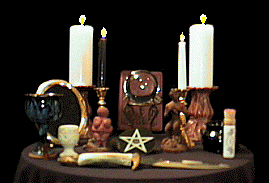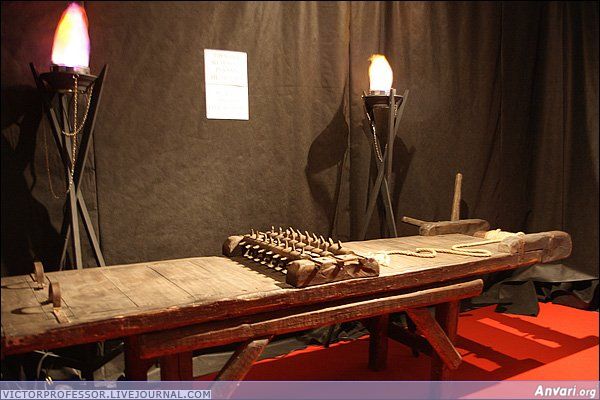Introduction
Delving into the world of Wicca has been a confusing journey, to say the least. Books like her hidden children by Chas S. Clifton or Modern Wicca by Michael Howard, and online sources including wikipedia and religioustolerance, agree on some very basic history, beliefs, and symbols. But beyond these, the opinions feather out infinitely. This dispersion of beliefs and practices in itself can be considered a trait of Wicca.
“Its scheme is more horizontal than vertical, with no central organization and no hierarchy. […] Someone telling the history of a broad movement will be tempted to focus on leaders and groups. […] The problem with Wicca in particular is that most Wiccans are not in groups but are “solitaries” who may join with other Wiccans only occasionally...” (Clifton 11)
To further complicate the issue, many of the words used to describe Wicca and Wiccans are contested – so much so that Clifton dedicates an entire chapter to discussing definitions. Pagan and neopagan, witch, witchcraft, Craft and Wicca all had to be defined or redefined for the public, since they bore (and still bear) many negative connotations. Not all Wiccans, witches or practitioners of the Craft call themselves by all the other terms, adding to the confusion.
According to the Merriam-Webster dictionary, Wicca is “a religion influenced by pre-Christian beliefs and practices of western Europe that affirms the existence of supernatural power (as magic) and of both male and female deities who inhere in nature and that emphasizes ritual observance of seasonal and life cycles.” The use of the term “pre-Christian” is significant – it is not so much to provide a date (B.C.?) or a cultural origin (Egypt? Greece?) but rather a declaration of validity next to Christianity, or superiority over it. (For an extreme case, see http://www.wicca-spirituality.com/christian-wicca.html).
Wiccans recognize Gerald Garner as the inventor or reformer of Wicca. While he himself claimed to be reviving prehistorical (pre-Christian) beliefs and practices and fleshing them out with material from other religions, the connection to antiquity is highly disputed. (wikipedia - Wicca - origins)
This is not a study about Wicca itself as much as a look at the plentiful symbols and paraphernalia associated with it. The focus will be on online sources. These are numerous, since the isolation of witches and their tendency toward written word has fueled a large online community (Howard 296).
This image on the homepage of wicca.org brings us our first two symbols. The cross with a ring-like head is the Egyptian ankh, adopted by Wicca as a symbol of life. The other symbol, better known and central to Wicca, is the pentagram. It can cause confusion as it is frequently mistaken for the inverted pentagram of the "Church of Satan". In Wicca, it represents the five classical elements Air, Fire, Water, Earth, and Spirit, which unites the other four. The elements (understood in a metaphorical sense) are important to rituals and magic, symbolizing different seasons, cardinal directions, powers, times, colors, plants, and more (see this in-depth list). Both of these symbols show the tendency of modern Wicca, since its beginnings with Gardner, to freely adopt symbols from other religions and cultures - the ankh from Egypt and the elements from Greece.
Books
This website has its own definition of Wicca, which tells us that there is no official text of Wicca. Despite this, Wicca is a heavily textual religion (Clifton 13), and all the online stores I found had large collections of books (Such as here). The books teach us several things. First, the plethora of topics and authors reveals some of the aforementioned horizontal structure of the religion. Next, they show a desire to determine methods, or rules or structures of some degree. One can find...
- books on tarot card reading. Divination with tarot cards began in the 18th century. Some occultists trace its origins to Egypt, though there is no documented evidence for this.
- books about talismans. The description of this book says that "Here is a multitude of talismans, charms, seals, and other magical figures from many ages and cultures, representing just about every desire of mankind."An organization of dispersed information, and again, a free adoption of beliefs from other cultures.
- guides and self-help books. These are quite abundant, probably because so many Wiccans are isolated and learn most of what they know from books.
- And in the midst of all of this, a book on the Psalms (?!). Here is the description they offer: "This small concise book includes 375 different ways to use psalms for love, power, revenge, success, blessings, prosperity, protection, and much, much more. It includes purposes, rituals, and prayers. In addition all 150 psalms are included." I found it curious, having stumbled repeatedly on a general loathing of Christianity among Wiccans, to find them using the Psalms. As we can readily tell from the description, they have little to do with their original function of collective worship and individual communication, prayer, and reconciliation with God.
Altar Items
Altars are important for many Wiccan rituals. They are heavily symbolic.
Typically, an altar is arranged either in a right/left structure - the left side representing the goddess and all associated symbols and the right side the god and his symbols, or in accordance with the four cardinal directions, which each have an element associated with them, the elements also having a gender association.
 |
| A left-right arrangement. Note the statues of the god and goddess. |
 |
| A simple layout following the cardinal directions. Usually combined with the first layout to some degree. |
Let us take a closer look at some of the items on the altar:
Candles: They represent the presence of the god and goddess and the four elements. The above silver candle represents the goddess, gold represents the god. In rituals, lighting and extinguishing candles marks the opening and the closing of the ritual. Some believe that the smoke carries prayers and wishes to the gods.
Statues: Usually a statue of the god and goddess are placed on the altar as well. The above statue is of the goddess, and also the Norse goddess of fertility, Freya.
Pentacle: It is common to have the pentacle represented strongly on the altar, in various forms. Besides the sliver-plated one above, they can be wooden, or printed onto the table-cloth, and are often inscribed on many other items; candles and candle-holders, statues, the athame (ritual knife), etc.
Cauldrons: Often made of cast iron, cauldrons are used to burn incense or written petitions and to mix herbs. They are a symbol taken from Celtic mythology and represent their goddess Cerridwen, the womb, and the earth.
Wands: A common symbol used in Egypt, Greco-Roman mythology, and not least, Freemasonry. (Gardner freely borrowed from the Freemasons). It often corresponds to the element Air. The wand is occasionally associated with yang energy, taken from the Asian philosophical concept of yin and yang.
Chalice: The chalice is another feminine simple, used in conjunction with the athame to represent procreation and universal creativity. It is a common symbol of Christianity, Unitarian Universalism, and also Rastafarianism (where the term refers to a water-pipe or bong).
| The sign on the handle of this knife represents the moon phases and the goddess. |
Athame: This ritual knife is used to channel psychic energy and to cast a circle at the beginning of a ritual. It is practically never used for actual cutting. It is a masculine symbol as well as a symbol for fire.
The last four items mentioned - the athame, chalice, wand and pentacle, represent the four elements (athame - fire, chalice - water, wand - air, pentacle - earth), but also derive from the Celtic mythological weapons of sword, cauldron, spear and shield. Furthermore, the four tarot card suites are swords, cups, wands, and pentacles.
Bumper Stickers
Bumper stickers play a central role in Wiccan practices, and are derived from an ancient Mesopotamian tradition of carving proverbs into the back of chariots. No, not really. But because bumper stickers were more or less jokingly referred to in this assignment, here are some interesting ones I found (all from www.witchstore.net).
"That old-time religion" - three things that we have seen previously: An intentional distancing from Christianity, a pentacle, and the claim of being an "old" religion.
Again, the theme of disliking Christianity.
On a slightly different note, there are quite a few "love" bumper stickers with a Wiccan twist.
Quite a few show a degree of pride in being a witch, a pagan, a feminist, or a homosexual.
Wicca has also become popular as a "nature-religion", an image that was first associated with them during the sixties.
Lastly, the moral code that most Wiccans follow. It is called the Wiccan Rede (rede is an archaic term for advice).
Conclusion
This was not meant to be a comprehensive examination and definition of Wicca, but a look at some of the most common symbols associated with it. They are extremely pervasive (especially the pentacle), almost all thoroughly interconnected, and borrow from a plethora of other traditions. I hope that this article has has demystified some of the dense symbolism one might encounter in a Wiccan setting - and perhaps given you a better idea of what Wicca is.
























